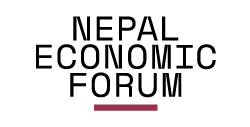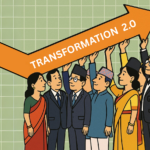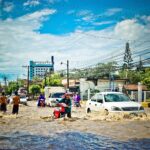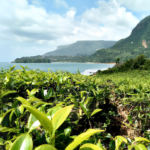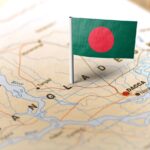Saudi Arabia is one of the countries that has been pushing tourism and when I traveled to four cities there as a tourist, one continuously gets to be pushed to think about Nepal and its potential. Saudi Arabia is a country with 33 million people, which is a tenth more than Nepal, and received 110 million tourists in 2023, with 28 million international travelers and 82 million domestic visitors. The country has set an ambitious goal of 150 million tourists by 2030. Religious tourism is a huge component in this country, and so is tourism in names of Visiting Family and Relatives (VFR) and Leisure. Numerous individuals from Gulf Cooperation countries (GCC) flow to Saudi, comprising majority of its international tourism. To attract tourists of other origins, the country recently opened in 2019, facilitating easier visa processes and relaxing the cultural and religious regulations, that has boosted tourism. Every place I visited, I continuously compared with Nepal – product, service, people, culture and beyond. Here are some of the issues I pondered upon.
First, nature is Nepal’s best product. Observing sunrise and sunsets, getting glimpse of the snow-peaked Himalayas, the rich bio-diversity within a span of 120 miles breadth of the country, the forests, the lakes, the changing colors of the hills remains extraordinary product to offer its visitors. We only must know how to market it well. We do not need to keep building view towers on hill tops or allow religious establishments to capture it; we just need to keep it accessible, and have the right information about the places.
Second, when we think of the old cities of the Kathmandu Valley and many other cities in Nepal, they are just open museums, which we can see as living heritages. The way people go on with their day to day lives, navigating through age-old traditions, culture and modern-day living. Global exposure is making Nepalis understand the value of these heritages we carry and are accustomed to. In Al-Balad of Jeddah, a historic city in Saudi Arabia, a very recent project has started to conserve old structures. Similar to this, restoration is also an ongoing endeavor in Nepal, recovering the physical heritage, especially after the earthquake devastated many of the tangible structures in the inner cities. This bringing back of life of these tangible heritage, have great potentials at the ends of tourism.
Third, I keep pondering upon the days of starting my career at the Soaltee Hotel in early 1990s, when there were few options for the tourists, and how the tourism experience has evolved in Nepal. We had very few trained human resources in hospitality and it was more of on-the-job learning. Today we have many hospitality schools churning out graduates and service staff. A café or dining experience in Kathmandu can be comparable with best cities around the globe. In Saudi Arabia, I met many Nepalis working in the hospitality sector. The upskilling is happening at a rapid pace. In high-end restaurants in Dubai, it is not rare to find a Nepali Sous Chef leading a large crew. If there are more tourists coming to Nepal and more establishments servicing tourists opening, there will be no dearth of people. Service drives the hospitality sector, and Nepalis are becoming synonymous with good service be it in Japan, the United Kingdom, the United States of America, or many parts of Europe. We need to just up the game a bit with more upskilling programs and more tie-ups with global hospitality institutions.
Fourth, while many people talk about Nepal not being able to compete with value-for-money destinations in Southeast Asia, especially for Indian markets, we need to learn and compare with the Alpine region of Europe. People who go to the Alpine region visit, despite having many cheaper options in the Mediterranean region. A small country like Slovenia, which is one-seventh the size of Nepal and with just two million people, received six million visitors in 2023. Nepal has also been a repeat destination for many tourists as people who fall in love with Nepal continue to re-visit. We need programs to tap this market with easier visa regulation and changes in laws for these visitors to rent places, lease them long-term, or even buy them. This would be a game-changer for Nepal.
Fifth, the backbone of Saudi Arabia’s tourism is religious tourism. Many Muslims visit Saudi Arabia at least once in their lifetime for Hajj or Umrao Pilgrimage. Despite Nepal’s religious importance with numerous pilgrimage sites for Hindu and Buddhist tourists, it has not been able to leverage its tourist potential. A prime example of this is Lumbini , the birthplace of Lord Buddha. There has been a lot of patchwork with the Lumbini Development Trust, the supposed custodian, becoming a funding agency for political leaders and their cronies. There has to be transformational thinking with regard to Lumbini and other religious sites that exist in Nepal. Destination experiences are key, not one-time fleecing as we see in these religious sites.
Finally, wellness tourism is projected to grow to USD 1.5 trillion by 2030. Many countries including Saudi Arabia, Rwanda, and others we have visited are working hard on a wellness tourism strategy. Again, for wellness tourism to flourish, there have to be competent people managing and providing services. You can build super high-end luxurious spas but if you do not have well-trained therapists, no one will come.
We need to have a global thinking and latch on emerging opportunities. We can learn from the recently concluded Nepal Premier League where Nepali cricket has been taken to the world with the help of global broadcasting companies and other technical advisors. We need global firms and thought leaders to come and exploit the opportunities with the clear condition that they will train Nepalis to take over the reins in the years to come. Nepal’s tourism potential is here to stay, we just need to leverage it.
Sujeev is the founder CEO of beed. He leverages over 25 years of experience in diverse fields and geographies to advise, lead and inspire. With comprehensive networks in Nepal’s public, private, civil and diplomatic sectors, Sujeev is a trusted business and policy advisor and respected strategic thinker. From economies of developing countries to economies of human beings, he moves across different worlds, with his passion for the Himalayas being the axis.
